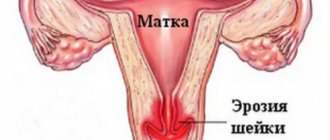Brown Discharge After Checkup at 39 Weeks
My gynecologist also told me during the courses that if there is discharge on the day of the examination, then it is unlikely that it was a plug.
In theory, your doctor should warn you about this. but it’s better to call her anyway. This happened to me too after the examination. but I haven’t given birth for a long time. the traffic jam came out on its own one morning, at night I went to the district with contractions))))))
Most likely the plug is coming off, I had the same thing after the examination! I gave birth 2 days later)))
+1 I also gave birth 2 days after the plug started to come out.
I also had an examination this afternoon, 39 weeks, at first the discharge was dark brown-bloody with streaks, now in the evening it’s just pink (the doctor, of course, warned about pink that it could be)), but only now my stomach latches every 10 min. I don’t understand, are these contractions or just training?
I did this: no-shpa and shower. If it passes, then workouts. Well, if not, then :073:;)
Yes, I suffered all night, and by the morning it calmed down :(. although the interval was 5-7 minutes.
I had fun like this for 3 weeks before giving birth:065:
I had fun like this for 3 weeks before giving birth:065:
Yes, it's fun entertainment :065:
Yes, it's fun entertainment :065:
that's not the right word! At 37 weeks, I dragged my bags to the door and got ready to go every night to give birth. She gave birth in the PDR :))
Good afternoon. This morning I saw the doctor with whom I am going to give birth. 38-39 weeks. She examined me and said that my cervix was completely closed and I wouldn’t give birth for sure within a week. Now I came home and saw dark brown discharge. Is this normal after such an examination? Or should I call a doctor or an ambulance? During the examination it was a little painful, then and now there are no unpleasant sensations.
What does it mean - the cervix is still completely closed? what is she doing? Is something gradually opening up? It seemed to me that it generally begins to open only during childbirth. ????
What does it mean - the cervix is still completely closed? what is she doing? Is something gradually opening up? It seemed to me that it generally begins to open only during childbirth. ????
no, gradually and for many;) It happens that they come to the RD with a closed one, but it happens that at 38 weeks there are already 2-3 cm ????
I also had an examination this afternoon, 39 weeks, at first the discharge was dark brown-bloody with streaks, now in the evening it’s just pink (the doctor, of course, warned about pink that it could be)), but only now my stomach latches every 10 min. I don’t understand, are these contractions or just training?
What to do in this case?
To reduce discharge and to prevent diseases, you must adhere to several rules:
- Stop sexual activity.
- Maintain intimate hygiene - shower your genitals several times a day, especially after visiting the toilet. Remove hair from the pubic area. Apply antiseptic treatment of the vagina.
- Use disposable sanitary pads.
- Underwear should be made from natural fabrics and not squeeze the woman’s body.
In order for your pregnancy to have a favorable outcome, you must carefully monitor your psychological and physical health, closely monitor the color, consistency, smell and volume of vaginal discharge, regularly visit your gynecologist and fully report any changes that have occurred.
Regular visits to the gynecologist are a necessary condition for maintaining the health of an adult girl. You need to come for an examination at least once a year, and much more often during pregnancy. But what to do when a harmless and short medical procedure provokes discharge? Why can spotting even appear after an examination by a gynecologist? There may be several explanations for this phenomenon, and we need to respond based on them.
Read in this article
Several circumstances may be responsible for the mixture after examination:
- Doctor's negligence.
An examination to assess the condition of the cervix occurs using a gynecological speculum with a hard surface. They can easily damage the delicate vaginal mucosa, which is what will happen after examining the cervix. - The patient herself.
If a woman is overly nervous, she may make involuntary movements and tense during the procedure. This contributes to injury to the mucous membrane. - The need to take a smear.
The manipulation involves peeling off the cells of the vaginal mucosa to analyze the condition of the organ. There is no way to do this without damaging the shell. - The onset of menstruation.
Menstrual bleeding rarely opens profusely; in most women it begins with small discharge. Despite the fact that everyone is tracking the dates of the “red days,” excitement and other circumstances can hasten their arrival or delay them. And menstruation will coincide with the day of the examination.
Bloody discharge caused by these reasons is not dangerous.
Brown discharge at 40 weeks of pregnancy
Quite often, a woman tries to independently determine the cause that led to the violation. That is why when brown discharge appears in late pregnancy, the first thing they do is look for an answer on forums on the Internet. I would like to note that each organism is individual, gestation can occur with its own characteristics, therefore, sometimes even similar symptoms can be observed with different disorders. Sometimes, depending on the situation and the exact stage of pregnancy, one or another manifestation may be regarded by doctors as a variant of the norm. That is why, if discharge appears, you must immediately inform your doctor.
Treatment options
Further treatment tactics depend on the cause of the pathological discharge. If the cause of bleeding is endometriosis, then a combination treatment (surgical and hormonal) is prescribed. Depending on the severity of the disease, during the operation doctors excise individual areas of endometriosis or completely remove the uterus.
If a small polyp is detected, conservative treatment may be prescribed. Hormonal medications reduce estrogen levels and increase progesterone levels. Doctors prescribe Diferelin, Regulon, Gentamigin, Normkolut as medications. If drug treatment does not bring results, then surgery is performed.
If bleeding is caused by cervical erosion, chemical coagulation is performed. The erosion is cauterized with a special solution. The medications have no side effects. After cauterization, no scars remain on the neck. The cervical canal is not deformed. If the erosion is large, then several procedures are performed.
If endometrial hyperplasia has been detected, then curettage is prescribed. The operation is performed under visual control of a hysteroscope. The resulting material is sent for histological examination. To avoid endometrial growth and proliferation, after curettage, doctors prescribe hormonal therapy.
Important!
Fibroids can be removed in two ways, using hysteroscopy or laparoscopy. During hysteroscopy, instruments are inserted transvaginally, while during laparoscopy, small incisions are made in the abdominal cavity.
Blood after a gynecological examination should not be left unnoticed. But there is no need to panic ahead of time. Do not make diagnoses on your own or make any decisions, especially while pregnant. Consult your doctor for advice and, if necessary, undergo an examination.
Brown discharge before childbirth is a directly natural process, and therefore should not cause negative emotions in the expectant mother. It is the first sign that the cervix is ready for the upcoming birth. Appear in small portions in the form of smearing brown mucus.
After examination by a gynecologist, brown discharge appeared at 39 weeks of pregnancy
Quite often during pregnancy, after examination by a gynecologist, expectant mothers complain of bleeding from the vagina, which appears literally 10-20 minutes after the procedure. In most cases, this kind of phenomenon is not considered a violation. The thing is that the uterine cervix is very abundantly supplied with blood vessels of various sizes. During the examination, the mucous membrane of this reproductive organ may be injured, as a result of which blood discharge from the vagina is observed.
Quite often, a woman tries to independently determine the cause that led to the violation. That is why when brown discharge appears in late pregnancy, the first thing they do is look for an answer on forums on the Internet. I would like to note that each organism is individual, gestation can occur with its own characteristics, therefore, sometimes even similar symptoms can be observed with different disorders. Sometimes, depending on the situation and the exact stage of pregnancy, one or another manifestation may be regarded by doctors as a variant of the norm. That is why, if discharge appears, you must immediately inform your doctor.
A woman’s feelings and changes occurring in the body
At this stage, the baby is fully prepared for independent existence, so if you are in the 39th week of your second pregnancy, then there is a high probability that the second birth will take place this week.
Remember that sex at 39 weeks of pregnancy is unacceptable, since it is necessary to prevent infection from entering the birth canal, which has already been prepared for the upcoming birth.
Recommendations for reducing pain in the back, sacrum and legs at this stage of pregnancy remain the same: try to unload them more often, sleep in the correct position, wear a prenatal bandage, and be sure to get plenty of rest.
- When you have a tight stomach and lower back pain at 39 weeks of pregnancy, this is a signal that labor is imminently approaching.
- Pain in the pelvis, pubis and sacrum is explained by the action of relaxin, a hormone that is now actively produced and is responsible for relaxing bones and ligaments. The pelvic bones gradually move apart, creating the most favorable conditions for the baby to travel through the birth canal.
- Pain in the sacrum, back and spine, as well as pain in the legs, are the result of a shift in your center of gravity. Among other things, you may feel aching and shooting pain on the back of your leg, reaching to the knee. They arise due to compression of the femoral nerve by the enlarged uterus.
Swelling may also appear at 39 weeks of pregnancy. This is a normal phenomenon if the swelling is not accompanied by diarrhea, nausea and vomiting do not occur at 39 weeks of pregnancy. This combination of signs indicates a very bad complication characteristic of the last weeks of pregnancy - preeclampsia.
After examination at 39 weeks, brown discharge
It doesn't hurt too much! My blood pressure is up and my head hurts
Yes I went! sent to the OPB, I’m lying there, taking Dopegit
Today, too, after an examination in the maternity hospital, a lump came out like vein, only white
At 36 I was admitted to the maternity hospital for a week, from 34 it was already mild, the whole pregnancy was short, I gave birth at 41, so everything is very individual
I didn't think it was so fast! I'll keep an eye on the condition! Thank you
And I gave birth 2 days after the examination (unfortunately the period turned out to be not yet safe) next time I won’t give in?
I gave birth the next day in the evening
She gave birth a few hours later on the same day)
yes, they poked around and the plug came off, the doctor should have warned. Did it hurt when they examined you in the chair?
It’s a bit painful, but tolerable! she said she wouldn't do anything special
most likely a traffic jam, but keep an eye on the discharge, I’ve been smearing all day
Was there any discharge too? how long do they take?
Have you lost a lot of plugs? It’s just that they looked at me yesterday too, and just a little mucus with brown streaks came out yesterday, about half a teaspoon. I don't know if it's a traffic jam or not
most likely a traffic jam, but keep an eye on the discharge, I’ve been smearing all day
What to do
In general, only one thing can be said for sure: in order not to risk your health and pregnancy, you need to see a gynecologist in any case and as soon as you notice brown discharge. There is no need to guess how normal they are, because most often there is nothing in common between brown discharge during pregnancy and the norm.
Brown discharge during pregnancy is one of the most discussed topics and one of the most dangerous signs. Women are especially afraid of “spotting” in the first trimester, they are afraid in the second, but by the third, as a rule, they already forget about it. And then before the birth some appeared. Is it time to give birth this time?.. Most likely.
Several hours after the examination, the patient may experience brown discharge.
The reasons for such an incident may be the following:
- Minor mechanical damage to the inner surface of the cervix caused by a gynecological speculum. Shortly before labor begins, the cervix, which by this time has softened and opened slightly, can be easily injured. With this development of events, the brown discharge will go away as suddenly as it appeared, in a maximum of a couple of days.
- If discharge was noted before the 38th week, then this may be due to sexual intercourse. During pregnancy (if everything is in order according to physiological indicators), sex is not prohibited. However, in the final stages, you need to be especially careful when choosing poses.
- To avoid unwanted consequences, it is better to limit sex or give preference to safer positions.
- Brown discharge after examination may be the result of a plug coming out - a harbinger of labor activity.
Causes
Oddly enough, spotting after examination by a gynecologist is not a rare occurrence. The culprits may be:
- Doctor's mistake. An examination in a gynecological chair is carried out to assess the condition of the cervix. For this, gynecologists use a special mirror. This is one of the main diagnostic tools in a gynecologist's office. The hard surface of the speculum and careless movement of the doctor can injure the delicate vaginal mucosa, which will lead to the appearance of blood.
- Patient. A woman herself can become the culprit of light bleeding. If during the examination she becomes overly nervous and tense, this can also lead to injury to the mucous membrane.
- Smear collection. A smear is taken from the cervix and vagina to determine microflora and hidden infections. The material is collected using a plastic stick or spatula. It is impossible to do this without damaging the mucous membrane. Therefore, after a gynecological examination, you may bleed a little.
- The beginning of menstruation. As a rule, menstruation does not come suddenly. At first, slight discharge appears. It's no secret that certain factors can bring the date of the “red days” closer. Therefore, this date may coincide with the day of the inspection.
All of the above reasons are not pathologies, but are regarded as individual characteristics of the body. There is no reason to worry. These discharges end on their own in the shortest possible time. But if, after an examination by a gynecologist, the bleeding does not stop, then it is advisable to immediately seek help from a specialist.
The plug has come off
The plug can come off either after inspection by a specialist or without it. During the entire period of pregnancy, the cervix is tightly closed. There is a thick mucus plug in the cervical canal. If the neck is ripe, the plug should come off. This usually happens a few days, and sometimes a few hours before the onset of labor. But there are often cases when it goes away at the moment of the onset of labor, then you may not even notice it.
A plug looks like a clump of mucus, which can be of different colors: white, cream, pink, brown, with or without blood streaks. Its volume is approximately 60 grams (1-2 tablespoons). If a woman is not aware of this phenomenon, then the process of the cork coming out may frighten her.
The mucus plug comes off differently in all women. In addition, it can come out all at once, or maybe in parts.
Every pregnant woman needs to clearly understand that the appearance of brown discharge along with a plug in the third trimester during pregnancy several times increases the likelihood of getting an infection inside. Therefore, you should take care of yourself, do not swim in rivers, lakes, and do not travel or do housework.
Discharge in pregnant women
Bloody discharge of varying degrees of intensity may also appear in pregnant women after a routine examination. Why is this happening? Often the cause is a careless inspection. The mucous membrane becomes loose during pregnancy and the slightest mechanical impact can injure it. The volume of discharge is small. The discharge stops on its own within 2-3 days.
Examination of the vagina may provoke bleeding in low placenta previa. This is a pathology in which the placenta is located in the lower parts of the uterus. Presentation can be complete or partial. Women with such a physiological feature require special attention. Vaginal examinations are performed only as a last resort, as this can cause excessive hemorrhage and placental abruption. A careless examination may result in a risk of miscarriage. Bleeding in this case may be accompanied by lethargy, nausea, and dizziness.
Important!
In the third trimester, one of the reasons for the appearance of red or dark discharge may be the passage of a mucus plug. This is a harbinger of early labor. If the expected date of birth is far away, you should immediately contact a specialist.
Light spotting should not cause much concern if the blood is bright scarlet, the discharge is insignificant and there are no symptoms associated with the disease (itching, burning, swelling, redness, pain, high temperature). But if the next day after the visit to the gynecologist the bleeding has not stopped and discomfort appears, then you should see a doctor to determine the cause.
Indicators requiring immediate medical attention
If brown discharge is observed in the last stages of pregnancy, then first of all the expectant mother should note its features. This is important primarily in order to indicate the degree of danger. There are a number of signs, after detection of which you should immediately consult a doctor, namely:
- if brown discharge is accompanied by an unpleasant odor. As a rule, this sign is an indicator of an infection that poses a serious danger to the baby, especially in the last stages of pregnancy.
- The color of the discharge is bright red in color and may indicate serious complications, in particular premature placental abruption.
- The appearance of heavy bleeding is a sign of placental pathology. After detecting these, you must urgently seek medical help, as there is a threat to the life of the child and mother.
- If the nature of vaginal discharge of any quantity and in any color, and is also accompanied by painful sensations in the lower abdomen or lower back, this may be a sign of the onset of labor.
Whatever the nature of the brown discharge, after its appearance it is better to seek advice from your doctor. This way you will be able to avoid unwanted consequences and, having calmed down, tune in to the upcoming birth.
The reasons for such an incident may be the following:
How does 41 weeks of pregnancy proceed?
Many women panic when they cross the 40th week mark, when birth is supposed to happen. The date set according to obstetric calculations does not correspond to the actual period from conception. Therefore, a normal pregnancy can last 42 weeks.
However, at this period there is a danger of intrauterine fetal death. If the placenta has become unusable due to age, and labor does not begin, then the baby dies due to lack of nutrition and oxygen. During this period, the first feces may be released directly into the amniotic fluid. This phenomenon leads to problems for the child.
At 41 weeks, the uterus drops low, a feeling of pressure, pain in the lower back, sacrum and abdomen occurs. The already large child is constantly moving, which is very painful for the mother.
Interesting fact! Walking and climbing stairs helps speed up the birth of your baby. But lifting weights can provoke placental abruption.
Brown discharge during pregnancy at 39 weeks
Brown vaginal discharge during pregnancy may indicate the influence of unfavorable factors on the fetus or that childbirth is approaching. It all depends on the period at which such discharge appeared.
At 38-39 weeks it is already possible to expect childbirth, so the gynecologist must examine the expectant mother on the chair, assessing the level of preparation of the cervix. The procedure is quite painful and unpleasant, associated with slight trauma to the mucous membranes. Therefore, brown discharge during pregnancy can be considered as bloody discharge resulting from a careless examination. By the way, their color can be not only brown, but also brown and red. However, this is not at all dangerous.
In this case, at 39 weeks of pregnancy, brown discharge appears within a few hours after examination and disappears within a couple of days. Pain and discomfort when the cervix is injured can also be caused during sexual intercourse. The discharge may not go away for two days or more. Therefore, a man should show maximum caution and respect towards a woman.
Decidual polyp
Sometimes during pregnancy, the intermediate membrane between the amniotic sac and the wall of the uterus grows too actively. Excess tissue falls out into the lumen of the cervix under pressure. This can happen as early as the 2nd trimester, but sometimes happens shortly before birth. The decidual polyp is pinched, injured during examinations and sex, which is why bloody spotting, red, pink and brown, occurs. The anomaly is easy to detect with routine chairside diagnostics. There is no need to treat the pathology; the polyp will be rejected during childbirth along with the membrane from which it grows. But if there is severe bleeding from it, then the top is tied with a tourniquet.
Signs of possible infection
The presence of an infection is assumed when, after the next examination by a gynecologist, not just bloody discharge appears, but a strong odor or burning sensation is felt in the genital area.
During pregnancy, purulent discharge with an unpleasant odor definitely indicates an infection or the course of the disease. This can be dangerous for both the woman and the baby.
It is necessary to monitor the appearance of elevated body temperature, weakness, and chills. You need to see a doctor as soon as possible, without waiting for your appointment date, who will conduct additional examinations and prescribe effective therapy.
https://www.youtube.com/watch?v=https:tv.youtube.com
Modern medicine has a full arsenal of necessary means, the timely prescription and administration of which can ensure the health of the baby and his mother.
Hygiene before childbirth
Of course, any woman should carefully observe personal and sexual hygiene, but she should take this especially seriously before the upcoming birth.
Towards the end of pregnancy, the cervix opens slightly, the mucous plug comes off, and therefore the risk of infectious agents entering the uterine cavity, and therefore the baby, increases significantly.
Hygiene rules before childbirth:
- Shaving the pubis and perineum;
- Sexual hygiene at least 2 times a day and after each act of defecation;
- Refusal of sexual activity;
- Refusal to take a lying bath and visit the pool, sauna
.
Shaving the pubis and perineum
In many maternity hospitals, doctors and midwives insist on this procedure and do so not without reason. Shaving should be done for a number of reasons:
- Maintaining hygiene
. After childbirth, a woman begins to have profuse bleeding, and therefore hygiene should be very strictly monitored to prevent infectious complications; - Control of the perineum during childbirth
. During the eruption of the baby's head, the midwife carefully monitors the condition of the perineum to prevent its rupture. Hair will significantly hinder this; - Suturing ruptures
. During childbirth, incisions in the perineum are often made to free the exit for the baby. During suturing of the perineum, hair can get into the wound, which interferes with the doctor and subsequently leads to infection of the wound.
Sexual hygiene
important
Intimate hygiene before childbirth should be carried out especially carefully. The genitals should be washed with warm boiled water at least 2 times a day and after each act of defecation.
You can also use decoctions of medicinal disinfectant herbs (oak bark, calendula).
Vaginal sanitation
Sanitation of the vagina should be carried out only as prescribed by a doctor. During pregnancy, you should never take medications on your own, even local ones (suppositories, ointments, creams).
Closer to the 38th week, the doctor must take a smear of vaginal flora and, based on the results, prescribe local treatment. Quite often, even with a good smear, specialists prescribe prophylactic administration of suppositories to prepare for childbirth.
Refusal of sexual activity
Many women believe that having sex before childbirth is beneficial because... accelerate the body's preparation for the birth of a child. Of course, this is true, because due to the prostaglandins contained in sperm, the cervix begins to soften and open faster, but you should still remember that the risk of infection is very high at the moment. You should not risk your health and the health of your child.











